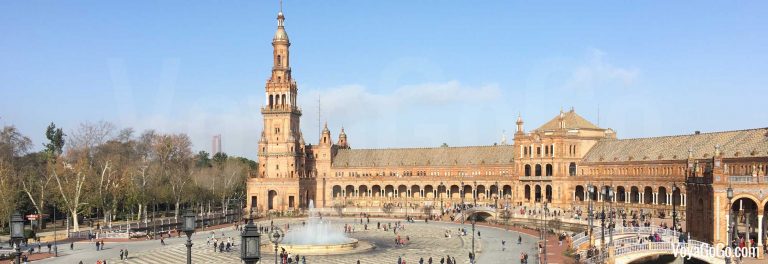
“Going anywhere nice on your holidays?”. “Well, I’m thinking about Seville.” That’s the hairdresser chit-chat cliché isn’t it?
Mine took a weird turn. I like to travel a lot, and Amanda, my hairdresser used to split her time between a salon in Leeds (UK) and a home in Andalusia (Spain). She was well placed to offer advice… “You’d have to be a lunatic to go to Seville in July or August! It’s not called the frying pan of Spain for nothing!“
That Warm Seville Christmas Feeling.
With this ringing in my ears, I started researching Christmas. Christmas to me usually means below my “winter sun-line”. That is, you draw a horizontal line on a map from Porto to Alicante. Anything north of the line is questionable as it may be too cold.
I’d first thought of Seville (Sevilla) on a train back to Malaga from Caminito Del Rey back in 2016. I was spending Christmas in Malaga. I’d blagged an earlier train despite it being reserved seats, and ended up opposite an English couple who were travelling to Malaga Airport. They’d just spent Christmas in Seville and were full of how marvellous it was. I paid attention. Notes for a future trip!
So my first questions to research as always were… Where’s the airport? Can I get a direct flight? How easy is it to get into the city from the airport? How expensive are the hotels? What is there to see and do?
I should state at this point that I can’t decide whether to call it Sevilla or it’s anglicised name of Seville. If it’s okay with you, I’ll haphazardly flit between the two.
Be At The Centre Of Everything.
My first near disastrous idea was to stay in a familiar chain hotel, located midway between the airport and Seville city centre. There was a bus service. I told myself it would be fine. Thankfully, as I researched more I came to my senses and ended up booking in at the Casual de Las Letras. A perfect central location. Part of a Spanish hotel chain that I’d never heard of, this hotel was just 5 minutes walk from the famous “Setas de Sevilla”, or the ‘Mushrooms of Seville’. Even if you know nothing of this city, you’ll likely have seen pictures of this iconic wooden sculpture with views over the skyline.
Seville is the kind of city where you pop out for breakfast, then after popping back to the hotel you go see something, then you pop back again around lunchtime, maybe for a siesta before your next adventure. You get the idea. A bus ride 3-times-a-day back and forth to a far flung hotel would have made for a rubbish holiday.
The Casual Hotel was fine. The staff were super helpful. It was a budget hotel, although quite boutique in style. Overall I was pleased and would stay again. My only issue was that it had a central internal courtyard, which was very pleasing on the eye, but prone to being a bit of an echo chamber for noise. I’d recommend some ear plugs or a room in another part of the hotel.
Arriving at night in the dark wasn’t ideal. It was also raining. I’d never heard of such a thing. This was Spain! Tonight I wasn’t really exploring. I settled on a little bar called “Ajo Blanco Bar ” about ten paces across the street. It was traditional. One of those places where you sit at the bar and chat to the owner. He had an eclectic taste for some rather strange British 60’s rock music, but was very chatty. I told him that we had a saying in England, that “the rain in Spain was mainly on the plane”. He roared.
Breakfast.
I’d done a bit of research of breakfast possibilities and settled on what became a favourite for several days of my stay. La Centuria. A little café on the same square as the aforementioned Mushrooms. I love places like this. It was clearly used by locals. It had a bar where you could slide onto a stool and be in the heart of the action. It may have been my accent or that I ordered an Americano coffee to go with my churros and chocolate, but a couple of the locals looked up. It was all friendly. Suddenly, here I was living my best Sevilla life.
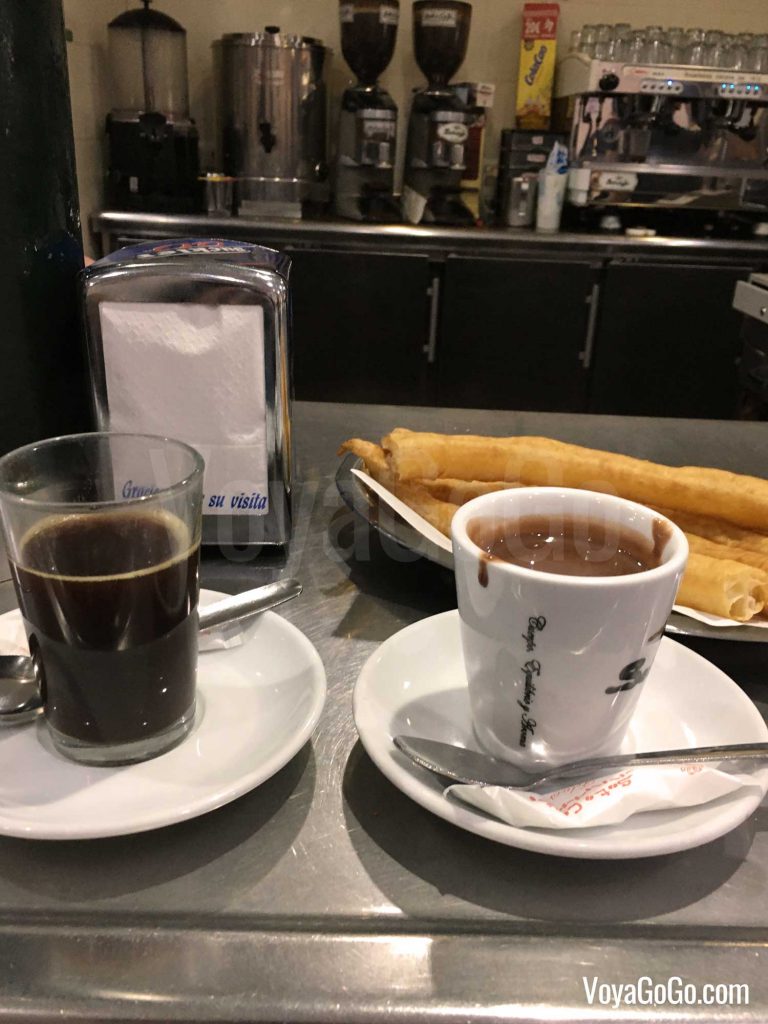
One of the greatest things about Seville, and Spain in general, is that life is outside. Every street has people bumping into friends and stopping to chat. Tables overflow from restaurants and cafes onto the street. There is a bustle. You almost feel like you’re stepping into a world where everyone knows everyone else.
Get Your Bearings.
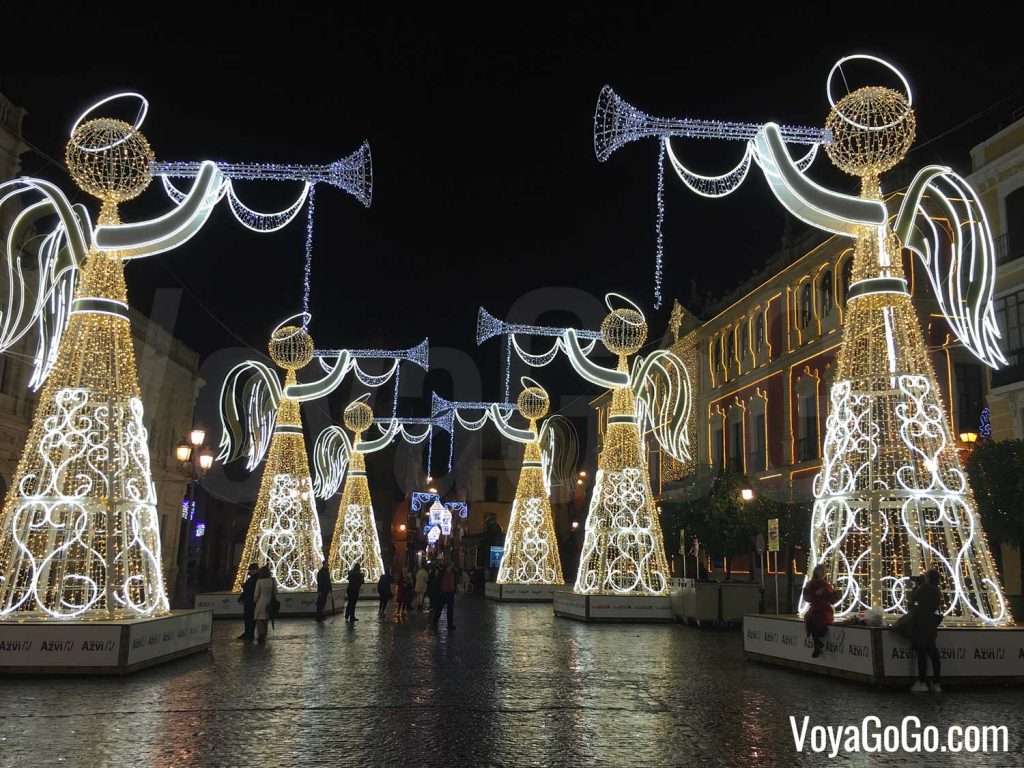
The centre of everything in Sevilla is probably the Plaza de San Francisco. If you find a place to stay within walking distance of this plaza, you’ll be able to get to most places of interest. It’s home to the “Ayuntamiento de Sevilla”, essentially the Town Hall. At Christmas time it’s the centrepiece of lights and illuminations.
The Paseo in Sevilla.
I’ve seen the Paseo before in Spain, so it shouldn’t surprise me, but it’s just so unexpected to turn a corner and stumble upon a spontaneous gathering like the one below on Christmas Eve. The following day, Christmas Evening, there were also lots of people out on the Avenue de la Constitucion which is the main thoroughfare of the city centre. It’s a busy shopping street and also a tram route. If you’re not familiar with the Paseo, it’s a gentle Spanish custom of taking an evening stroll with the family to get you in the mood for dinner.
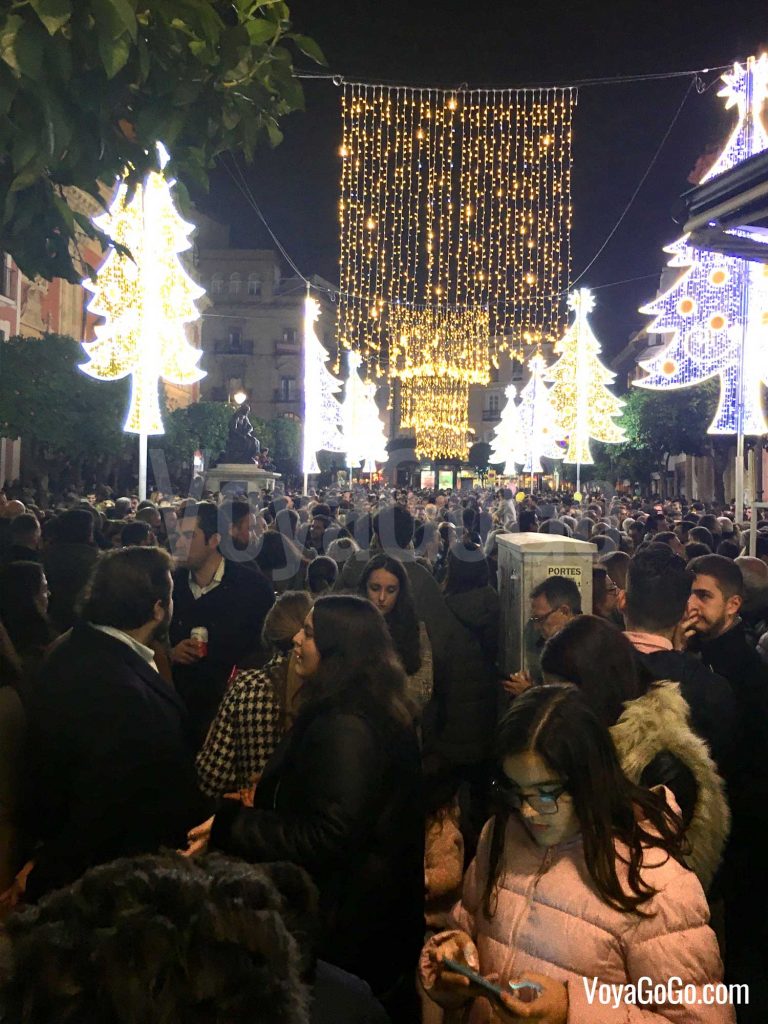
Seville Cathedral (Catedral de Sevilla).
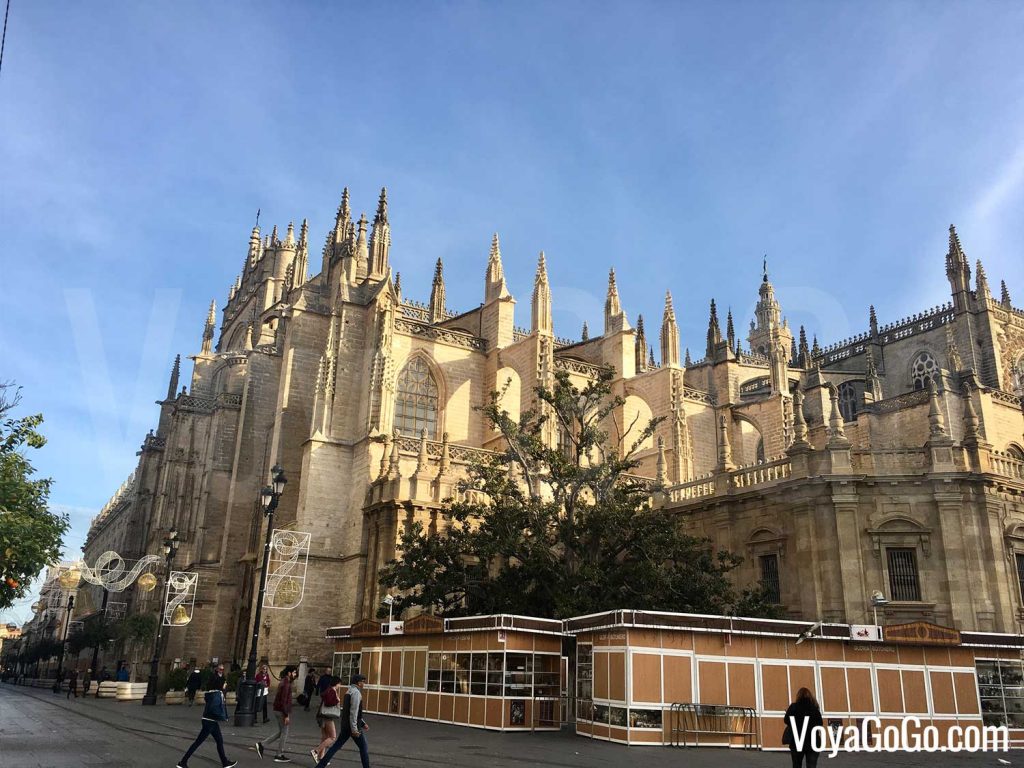
Also at the heart of the city is Seville Cathedral. “Catedral de Santa Maria de la Sede de Sevilla” to give it its full name. It’s a gothic structure, completed in the early 16th century, and for a thousand years it was the largest cathedral in the world. This place can attract large queues so it’s worth organising your ticket in advance. You can buy online, or if you also visit the nearby Iglesia del Salvador church, you can buy a joint ticket there and save yourself time at the Cathedral itself.
The Real Alcázar of Seville.
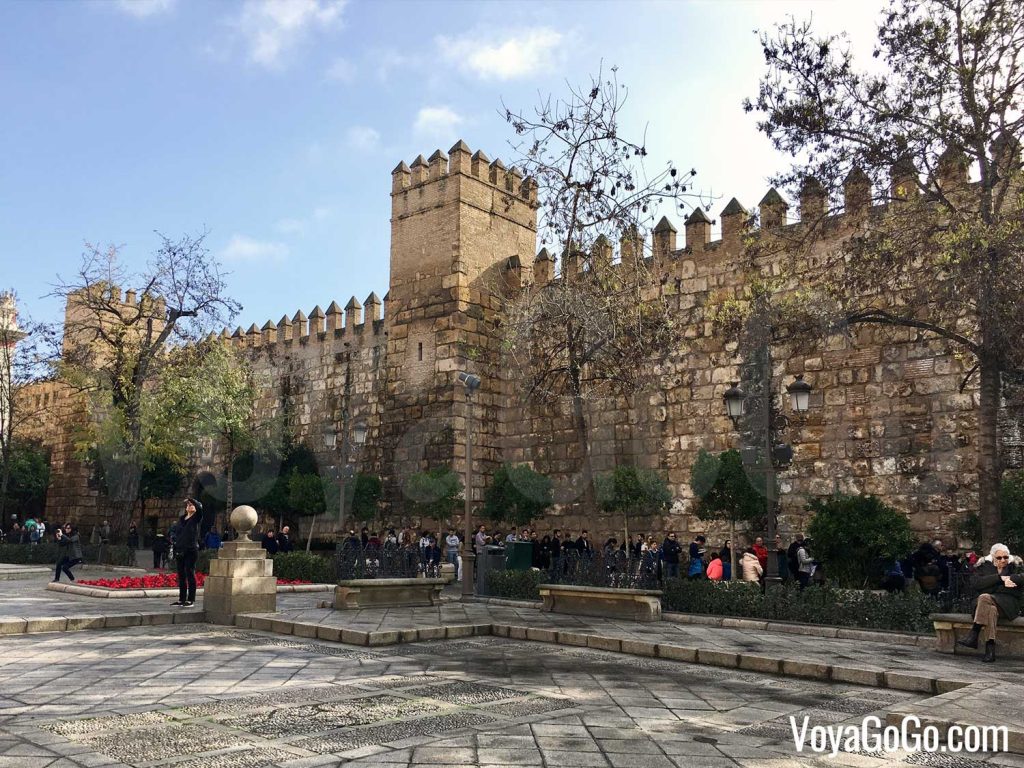
Just opposite the Cathedral is the Real Alcázar. The Alcázar is a royal palace built following the Christian conquest of 1248. Prior to this there had been a Muslim fortress on the site. I left my ticket booking too late for this and to get the ticket I wanted, the nearest date was a month away, so you must plan ahead. There are 3 possibilities on the ticket front. A ticket to the gardens only, which is easier. A ticket that also includes the palace ground floor and a third type of ticket that also includes the upper private chambers.
The Plaza de España.

The other epic attraction that is a must see in Seville is the Plaza de España. It’s located just to the south of the small narrow streets of the old town in an area with boulevards and space. About 15-20 minutes stroll from Plaza de San Francisco. It was built in 1928 for the Ibero-American Exposition of 1929 along with the adjacent Maria Luisa Park.
Its looks are so striking that it is a popular filming location, used most memorably in the Star Wars movie Attack Of The Clones, where it became part of Naboo.
The complex forms a huge semi-circle with bridges over a moat and a fountain. Each alcove around the semi-circle is tiled to represent a province in Spain, so it’s extremely popular with Spanish tourists looking for that selfie with their home province.
I was lucky enough to catch a free Flamenco show that was taking place on site.
Maria Luisa Park (Parque de Maria Luisa).
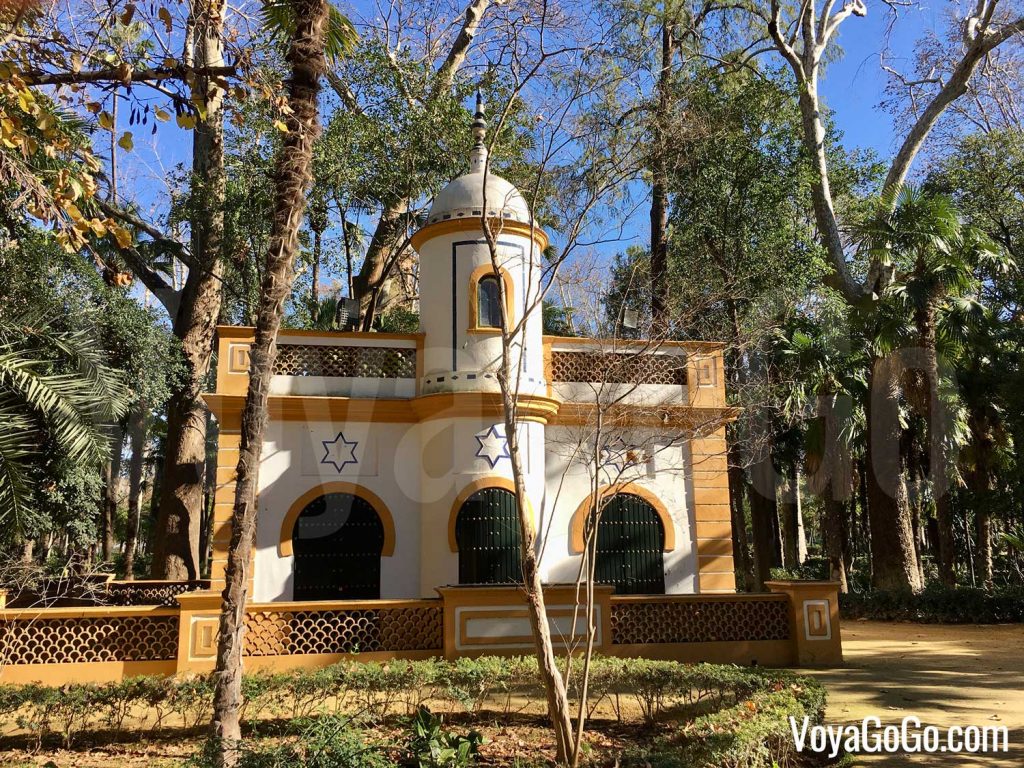
Facing the Plaza de España on one side and the Guadalquivir River on the other, this is a vast green area covering 100 acres in the heart of the city. Also built for that world showcase back in 1929, this park is full of fountains, pavilions, statues and interesting architecture and buildings.
It’s a chance to escape the traffic, feel the botanical green, and have a moment.
The Seville Tower (Torre Sevilla).
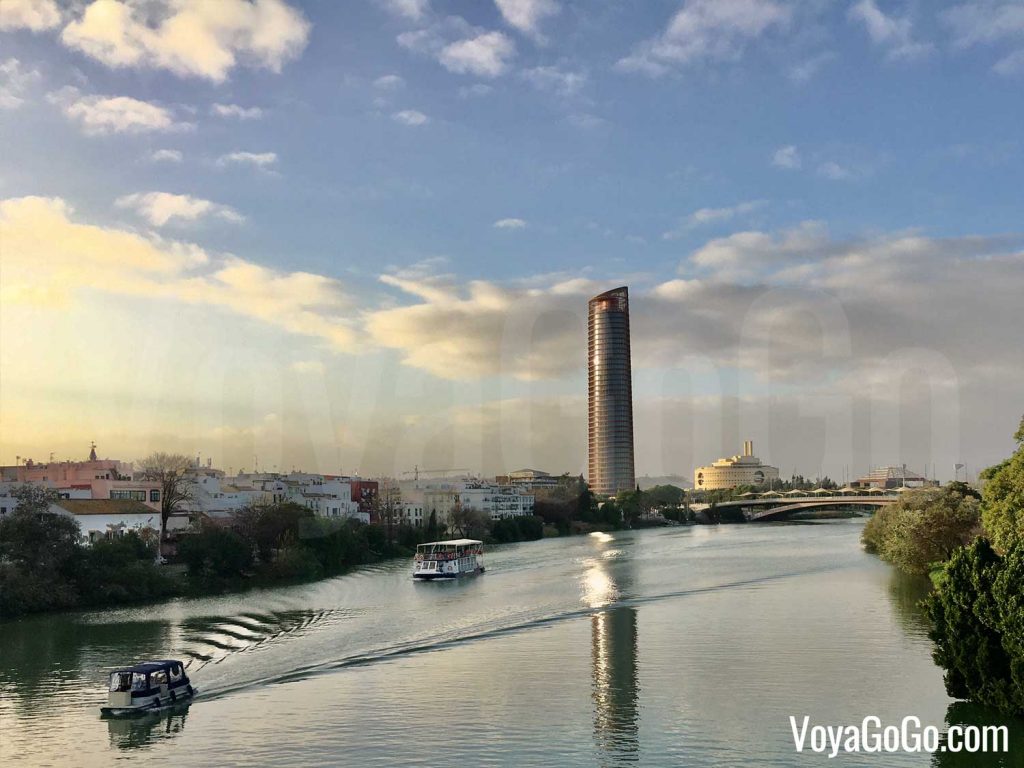
One of the surprises of my visit was the Torre Sevilla. It is a striking skyscraper on the city skyline, sitting on the opposite side of the Guadalquivir river to the main city centre. It’s almost 600ft tall and has 40 floors. At first, I just assumed it was another office block, which it is, but… Firstly, there is an attached modern shopping centre, which came in handy when I needed emergency socks from Primark. Secondly, I discovered by chance that there is a hotel in the tower and a rather nice panoramic bar at the top. Having ditched my plans to see sunset on the Mushrooms because of the queues, I hot-footed it here and spent a very nice hour or two, sipping Cuba Libre, whilst taking in the sunset from the best view in town. It costs 8€ entry, to go up to the bar in the lift and the drinks are a little pricey, but it did feel rather exclusive.
Triana District.
Also on this side of the river is the district of Triana. Entering over the Puente de Isabell II (Bridge of Isabel II), you pass the Castillo de San George and the adjacent Mercado de Triana. You then step off into a precinct street with restaurant after restaurant. Historically, this was a working class area of the city, and has become a bit of a tourist destination in itself.
Vibrant and maybe a little more authentic, there are streets to wander through and food to be had.
I did manage somehow to end up on a walkway along the side of the river around here. It was a pleasant, calm, sunny walk back up the Torre Sevilla.
The “Mushrooms” of Seville (Las Setas de Sevilla).
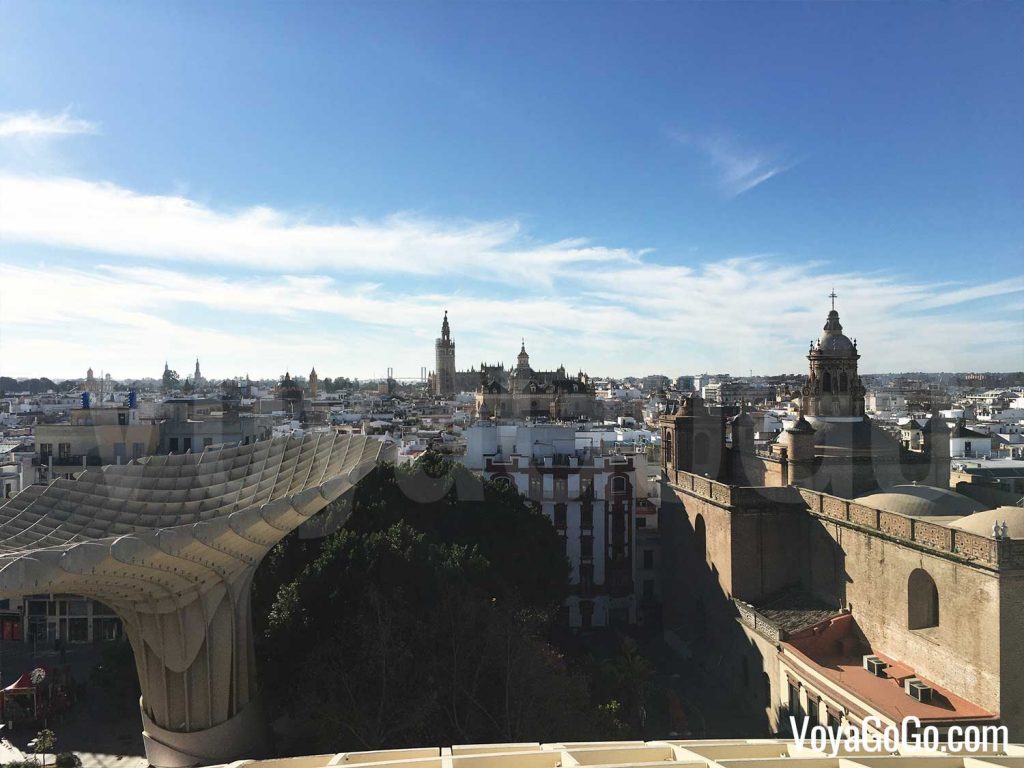
I did eventually get to take a tour around the famous mushrooms, but it was a more relaxed daytime affair, when the queues were pretty much absent. If you’re not familiar with this icon of Seville, it is a waffle-like structure that was completed in 2011, designed by Jürgen Mayer. It claims to be the largest wooden structure in the world. As well as being a striking piece of architecture, it also provides an elevated walkway with views of the city, along with shade in the square underneath, which in those summer months of 45 degrees celsius, can be a welcome relief.
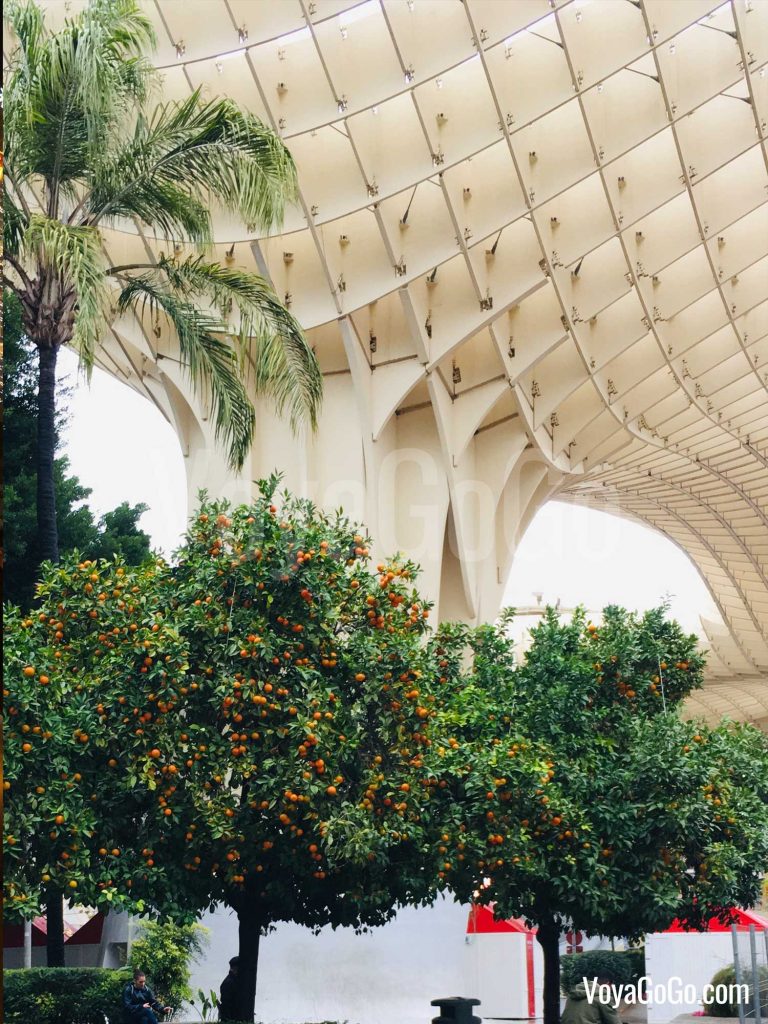
Christmas Lotto.
One of the joys of being in Spain at Christmas is the opportunity to take part in either the El Gordo (The Fat One) or El Niño (The Little One) lottos. El Gordo is a rather complicated lottery draw which takes place on Christmas Eve. It’s the biggest lottery draw in the world, with a prize pot of 2.4€ billion euros. I say complicated, because you buy either a full ticket which will set you back 200€ or more likely, a decimo which costs 20€. This is a ‘tenth’ ticket, winning that portion of any prize. There is a wide spread of prizes, so although the ‘jackpot’ is only 4€ million, actually there are multiple winners. To add to the occasion, the numbers are drawn on Christmas eve over several hours, with the numbers sung by school children live on television. I kid you not. El Niño is similar, taking place on the Feast of the Kings on January 6th.
Flamenco.
Flamenco is all over this city. You won’t struggle to find a show on. They will vary in terms of number of performers and the length of the shows. Some may offer deals with food or drink. One well regarded show is Los Gallos, which has been established since 1966, and is located in the Santa Cruz district.
Other Places To See In Seville.
The Bull Ring (Plaza de toros de la Real Maestranza de Sevilla).
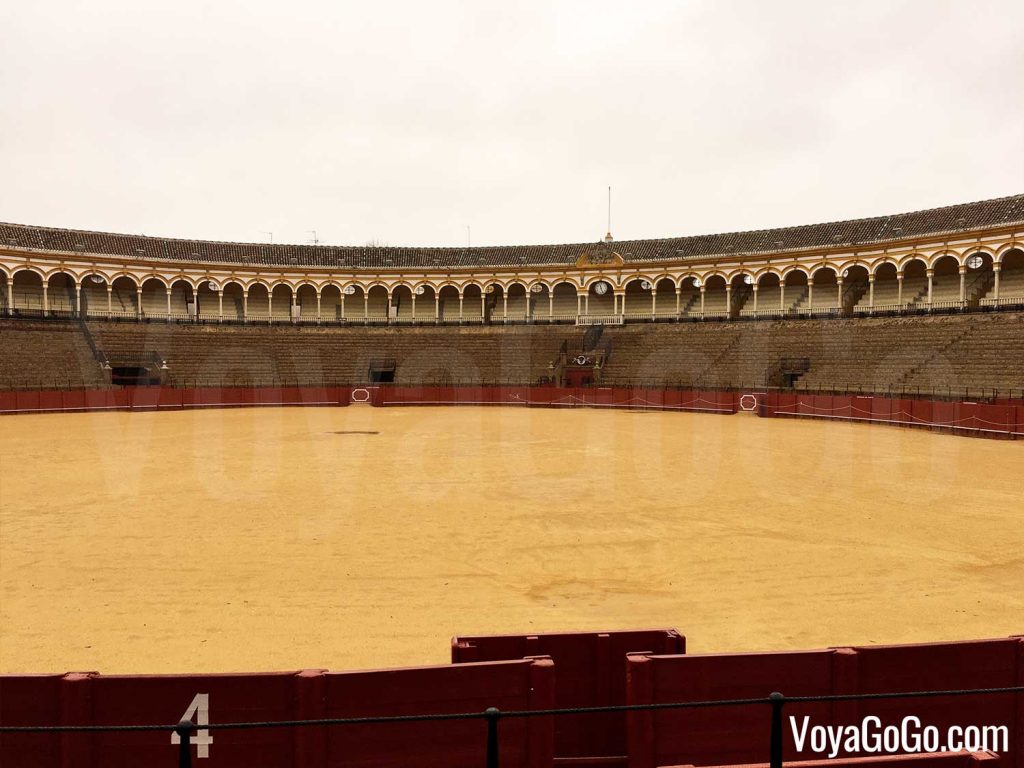
I have mixed feelings about bullrings in Spain. I have no desire to witness the activity taking place, but perhaps in the same way that I have no religious interest in churches, the buildings themselves are something to behold. There’s no denying that in centuries past, it’s where the culture was, and that means money was spent. There’s a lot to learn of the history here. With this in mind, there are guided tours of this bull ring where you get to understand more about the building and what went on there. This particular one in Seville is a Baroque bull ring dating back to 1871.
Teatro de la Maestranza.
This is the Opera House in Seville, playing host to a range of musical events throughout the year.
It sits just down from the bull ring and up from the watchtower, on the river.
The Golden Tower Of Seville (Torre Del Oro).
This is a 13th-century military watchtower for the city. Back in the day, they would literally pull up a chain that would hang across the river, to block entering ships. These days it doubles as a Naval museum telling the history of everything nautical in this city. I was surprisingly absorbed in this place and it had a bargain entry price of just 3€. A bargain.
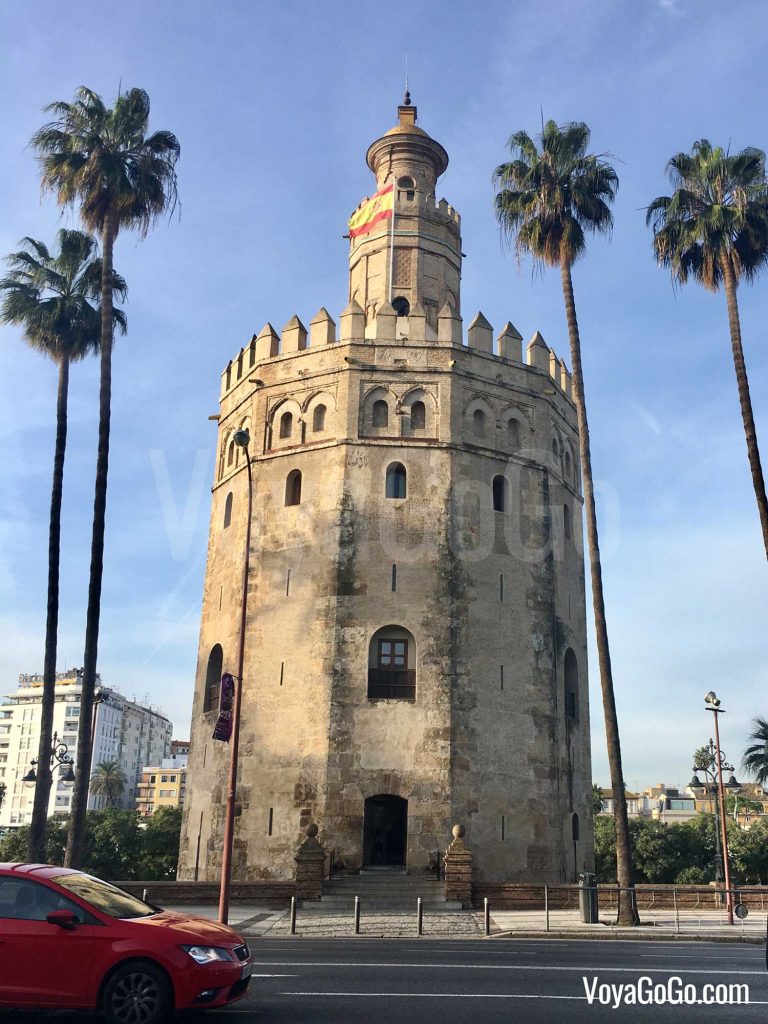
Murillo Gardens (Jardines de Murillo).
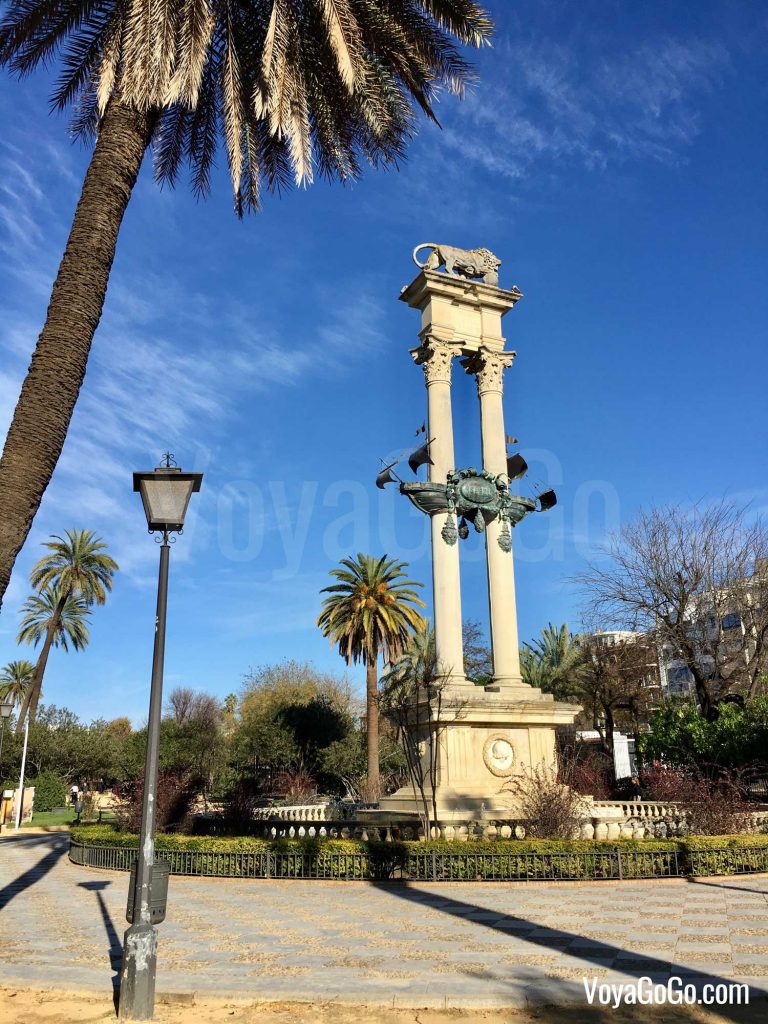
An interesting little park dating back to 1911. In the area near to the University and the Plaza de España, it is literally just over the wall from the gardens of the Royal Alcazar. There is a tall monument, topped with a lion which caught my attention. The monument is dedicated to Christopher Columbus.
Seville Aquarium (Acuario de Sevilla).
If you’re unlucky enough to hit some bad weather and rain, then this is an option for an indoor attraction. They offer a range of experiences, activities or guided tours.
Seville Museum of Fine Arts (Museo de Bellas Artes).
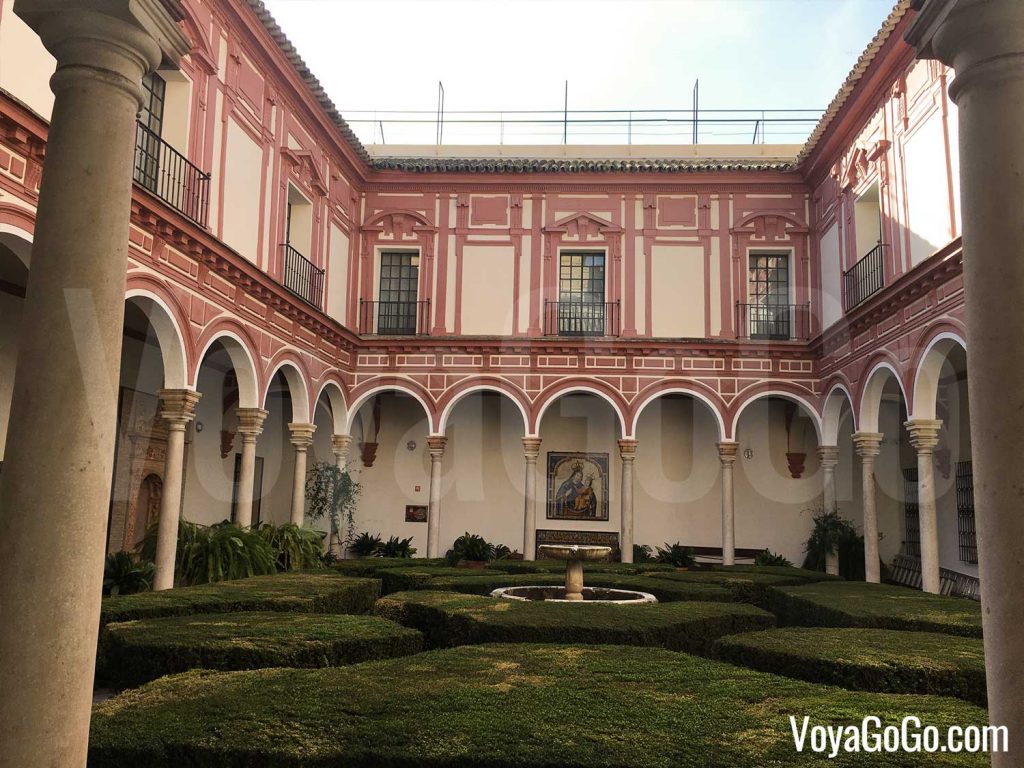
This is a little off the beaten track. I stumbled upon it just a few streets away from the bus station, one hot December afternoon. I don’t pretend to be an expert of all things art, but I’m often happy to take a look as I think there is something to learn about the culture and history of a place from the art they choose to present to you. This is a collection of mostly Spanish visual arts from the medieval period onwards. There was a novel locker system and bag store before your visit. The building is beautiful, with a particular mention for the internal courtyard garden.
Convent Dulces (Convent Sweets).
Or as I liked to call it, “Nuns with buns”. It’s a quaint and charming practice that has emerged in a number of the convents in Seville. The convents are largely ‘cloistered’, which is to say that the nuns do not go out or leave the convent walls. They earn money by making sweets which are sold via a window or Lazy Susan. You place your order, pay your money, and a bag of cakes arrives. One such place is the Convento San Leandro, but there are others too.
Getting Around Seville and travelling elsewhere.
Seville’s Tram.
Seville has a growing transport network. There is one tram line at street level (MetroCentro), but with planning for another three. The current line crosses the principal streets in the city centre, but away from the historic old town as the streets are just too narrow.
Metro de Sevilla.
There is also the Seville Metro which is a light metro rail service. This has one line, with a further three planned. I don’t know about you, but I’m seeing a pattern here. To be fair, much urban planning was halted around the time of the financial crisis and has yet to get back on track.
Buses.
There are lots of buses. They tend to start or finish around Plaza Ponce de León (which luckily was 2 minutes walk from my hotel) or Puerta Jerez on the south side of the city centre, near the university. Even with my amateur Spanish I was able to cope as it’s a flat fare of 1.40€. Just pay and go. “Hola” and “gracias”.
Airport Bus.
There is a special airport bus service that is easy to use, although I found it busy. It’s called “EA” – Especial Aeropuerto. It takes about 20 minutes to get into Santa Justa Station, and then goes on an arc around the southern side of the city, including stops at San Bernardo, Torre del Oro and ending at the Plaza de Armas bus station. It’s 4€ for a single ticket.
Coaches / Longer Distance Buses.
The Plaza de Armas Bus Station sits on the banks of the river, opposite the Torre Seville (Skyscraper tower). This is the station for more metropolitan and longer distance journeys.
I used it for a trip out to Santiponce (below).
Seville’s Train Stations.
There are two train stations in Seville. Sevilla Santa Justa which is the principal train station. Fast AVE services from Madrid arrive here. Located to the North East of the city centre.
Sevilla San Bernardo is the second station with more suburban lines. Located to the south of the city centre.
Days Trips From Seville.
Amphitheatre of Itálica, Santiponce.
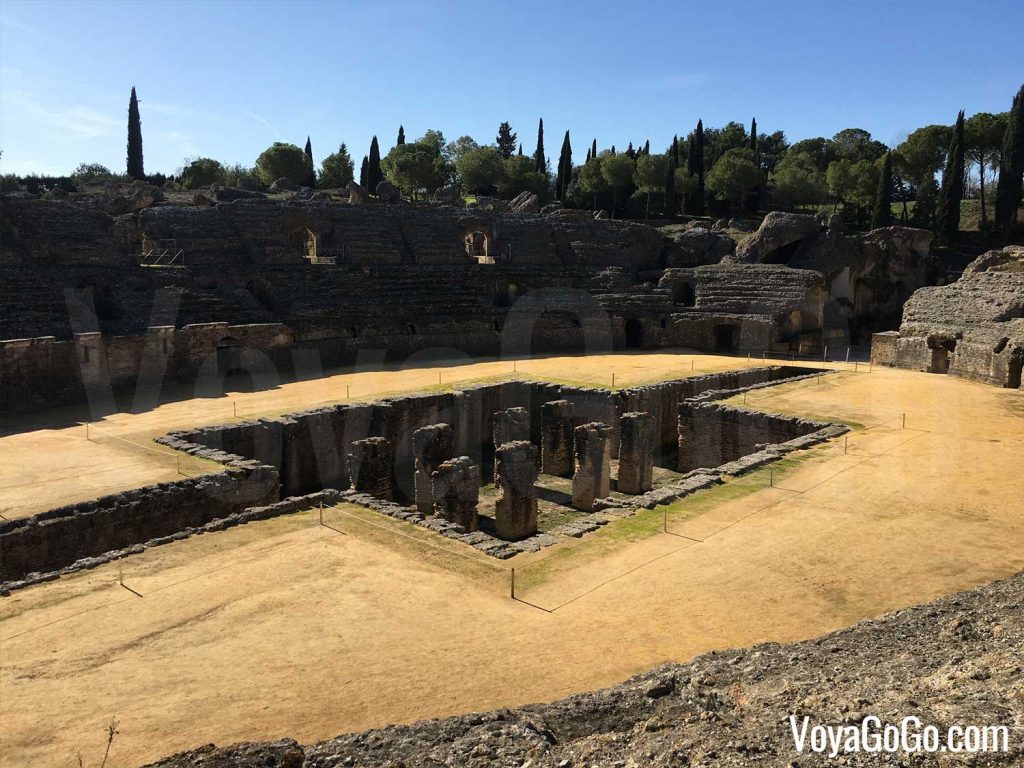
This is a stunning Roman amphitheatre. It was a former venue for gladiator fights dating back to around 100AD (give or take). It was built during the reign of emperor Hadrian. Yes, he of the “Hadrian’s Wall” fame. Consider this his western flank to the Roman Empire of the time.
As well as the amphitheatre and its caves, there are also remains of the adjoining community. Extensive excavations have taken place discovering former baths, homes and more. It is quite a sight. If you’re a fan of Game Of Thrones, it will seem familiar as it was one of the filming locations for Season 7.
Cadiz.
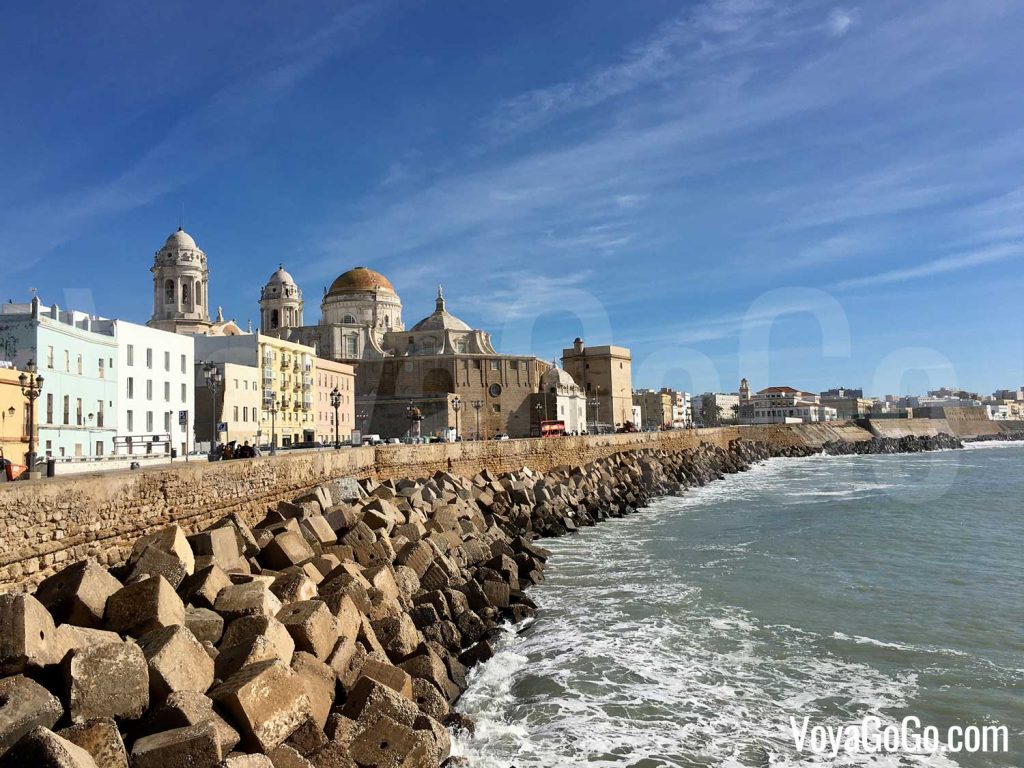
I also took a day trip to Cadiz on the coast, as it’s a city I’ve wanted to visit for some time.
This is a full day out as the train is about 1hour 40 minutes each way. It is just a beautiful city though. On the south westerly coast of Spain, Cadiz sits on a headland peninsula.
One tip, I would give… There is a ticket office at the train station. There was a queue, so allow some time so as not to miss your train. Paranoid about my Spanish, I researched the train times and numbers and wrote them down. That way, I could just hand it to the man in the ticket office and he could understand what I wanted. I avoided being that annoying tourist holding up the queue.
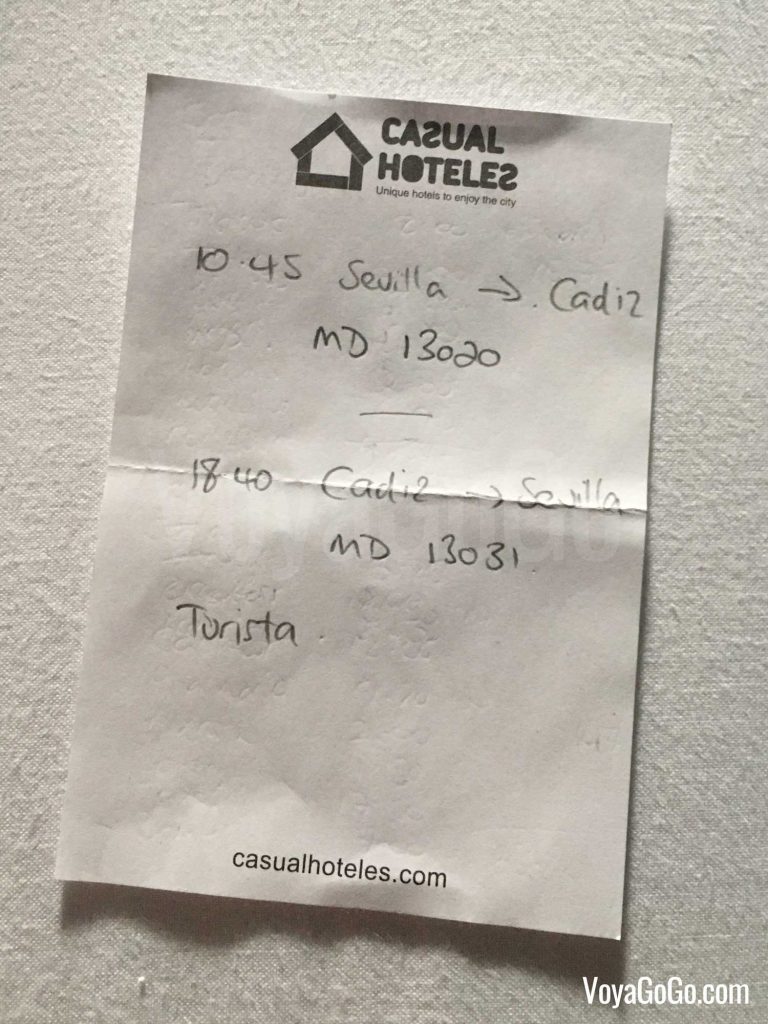
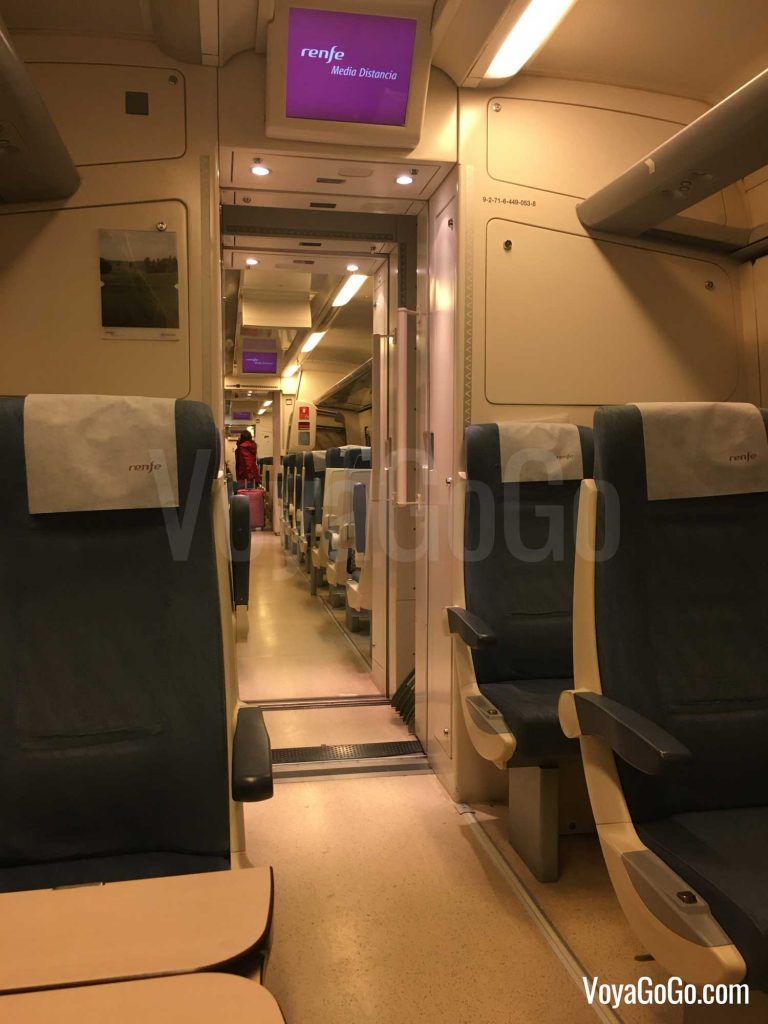
Jerez de la Frontera.
I was frustrated at missing this town. It’s on the same train line as Cadiz, and I had half a mind to try and squeeze in both, but it just wasn’t possible. Jerez is famous for its Sherry festivals, Flamenco festivals and dancing horses. One day, I plan to return for a longer trip to Cadiz and Jerez.
Cordoba.
If budget and time allows, Cordoba is another historic town to visit in Andalucia. A fast AVE high speed train takes just 42 minutes, whereas the cheaper, slower regional service can take 1.5 hours. Cordoba has a rich history having been an important Roman city and a major Islamic centre in the Middle Ages.
So, The Spanish Frying Pan is actually rather cool.
Seville is a vibrant city. It’s got heart. It’s got bustle. You can feel it’s Spanish passion. Also, you can’t miss it’s history. A clash of cultures over millennia, and each one has left an indelible mark on this great place. There’s stunning architecture on every corner. Whether you worship the sun, food, culture or history, you’ll find something here to keep you interested. But remember Amanda’s advice and don’t be mad enough to visit in July or August.
About The Author
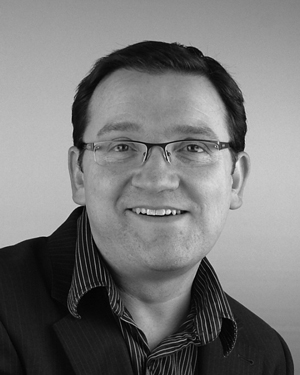
Tony Collins-Fogarty
Solo Traveller
I’ve worked in media for more than 30 years. I embarked on multiple solo overseas trips to attend training courses. Bitten by the bug, I’ve been travelling ever since. This blog is design to offer advice on how to get the best from your trips.
Previous Post: Malaga City – The Costa Del Sol’s Gem Hiding In Plain Sight.
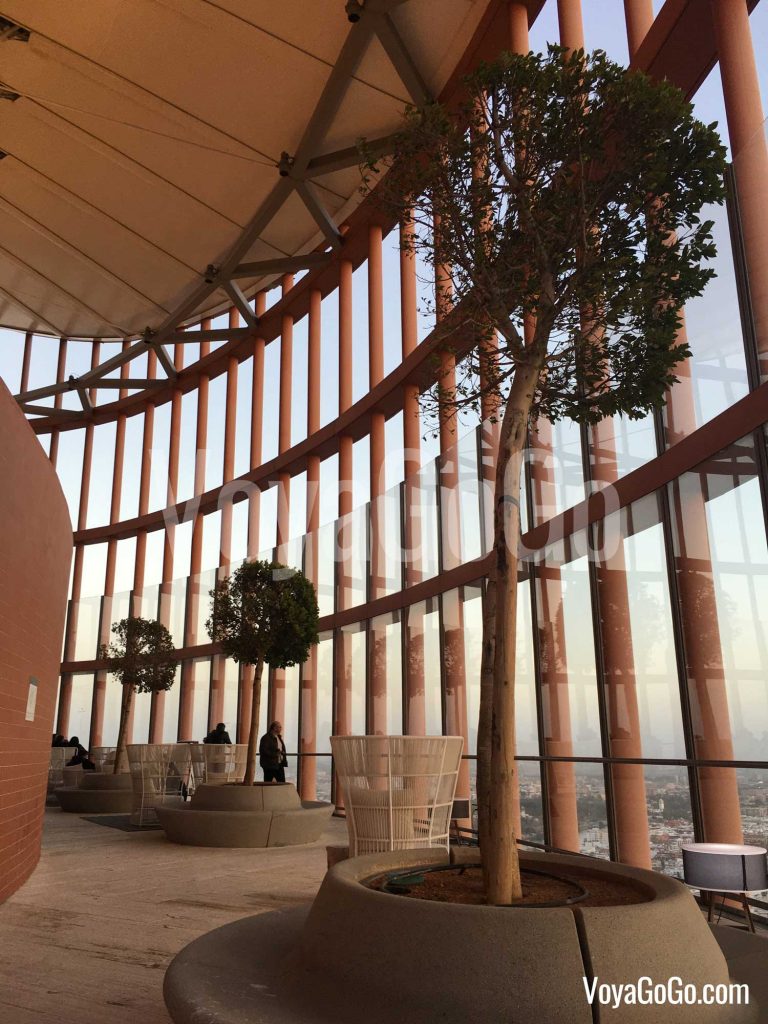
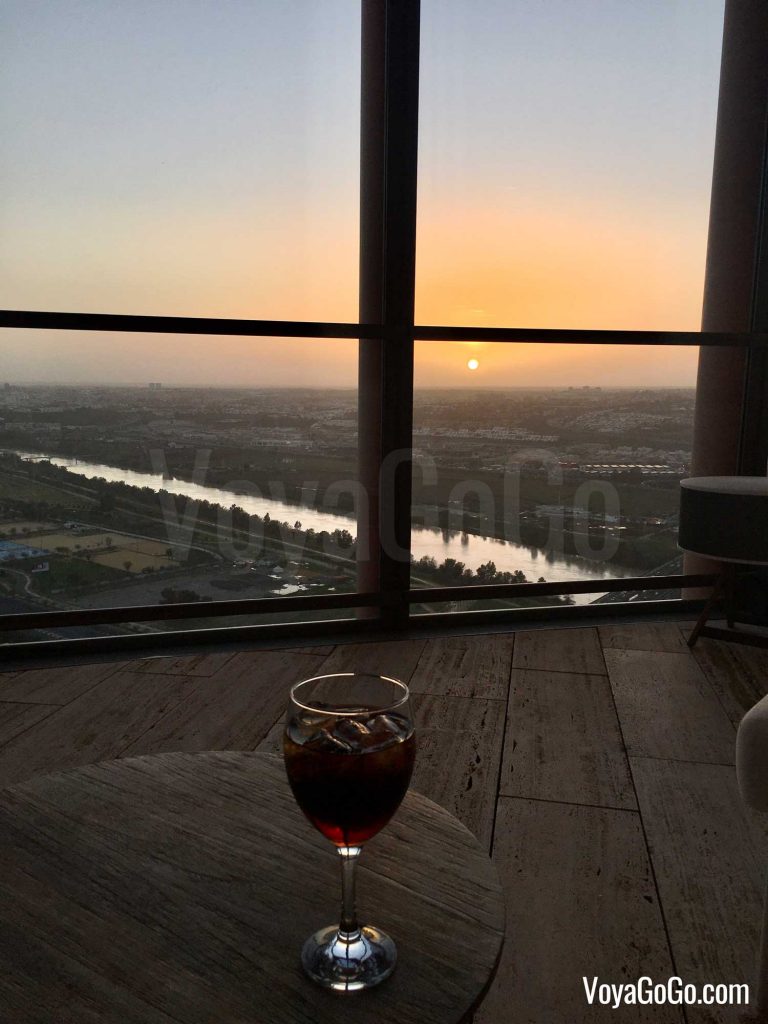
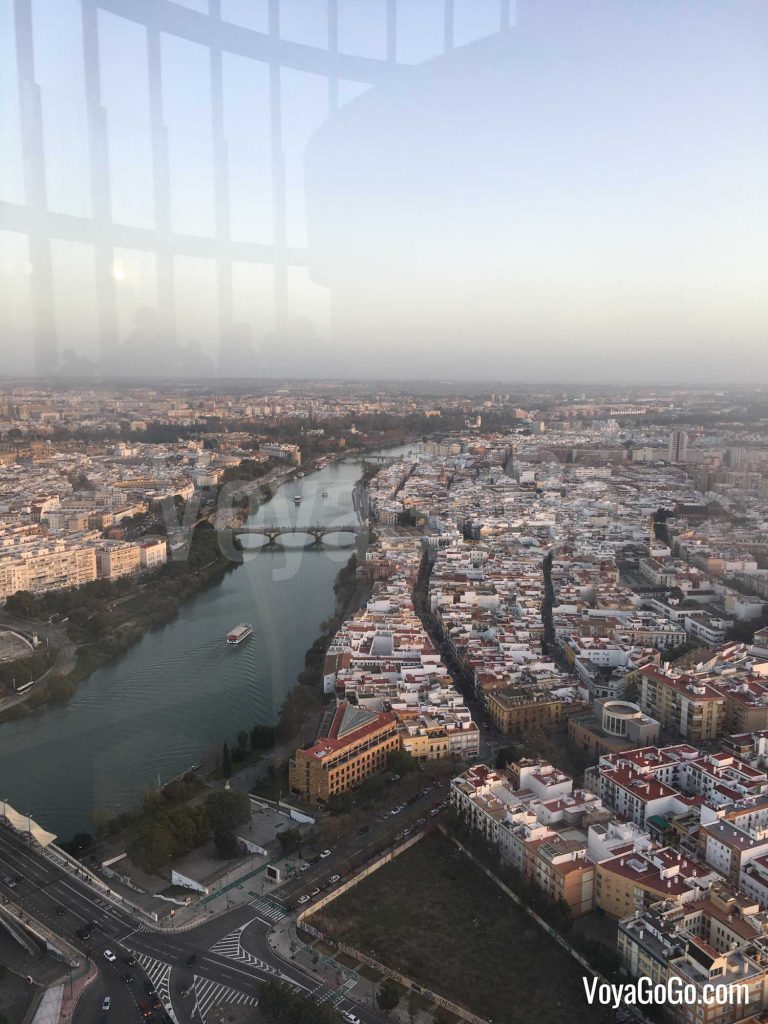
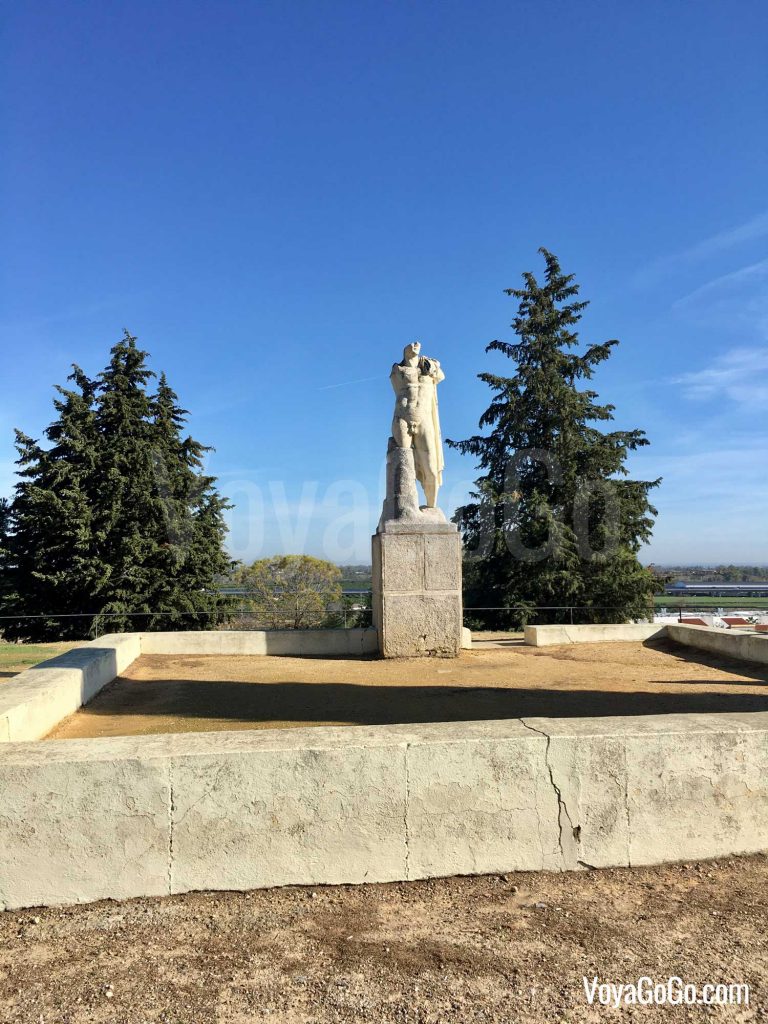
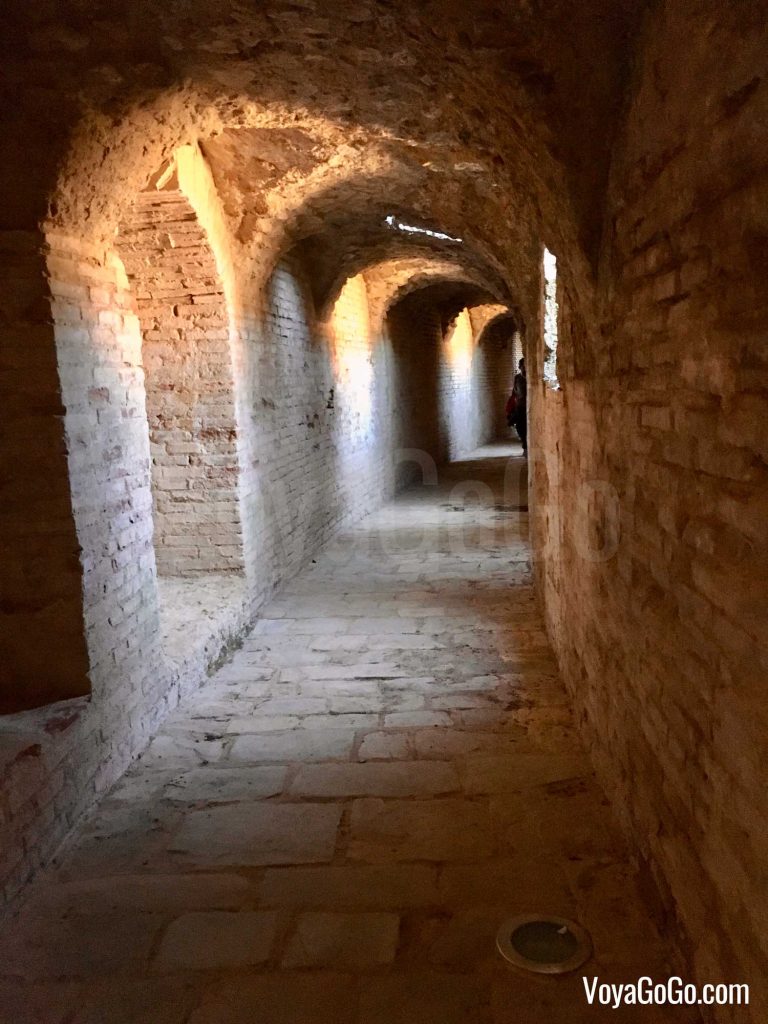

Social